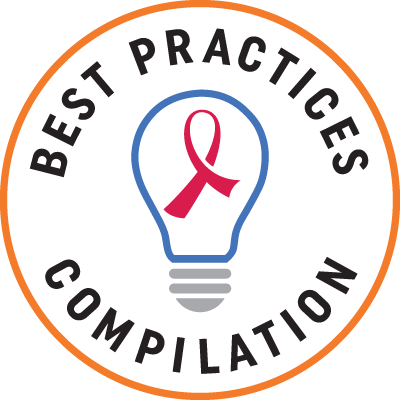Emerging and Innovative Models
On
HRSA’s HIV/AIDS Bureau has adopted a broad strategy for identifying HIV service delivery models. At one end of the spectrum are relatively flexible criteria for identifying emerging and innovative models, based on “real world” efficacy. At the other end of the spectrum are more rigorous evidence-informed standards.
Best Practices
- Center for Innovation and Engagement
- Boston University School of Social Work Center for Innovation in Social Work and Health
- IHIP
- IHIP
- The HIV, Housing & Employment Project
Technical Assistance
- The central hub of the AETC Program, the clinical training arm of the RWHAP, through HIV curricula, technical support to regional AETCs on practice transformation and best practices, and housing of all AETC-developed tools for HIV clinical staff. Project period: 2019-2024.
- SPNS project evaluating interventions that seek to improve the well-being of RWHAP clients 50 and older. Project period: 2022-2025.
- Design, implementation, and evaluation of bundled evidence–informed interventions for Black women with HIV. Project period: 2020-2024.
- Assessment of how, where, and why dissemination products are accessed and used, as well as the utility and performance of the products created under SPNS- and TA-funded initiatives. Project period: 2022-2025.
 Initiative documenting best practice strategies and interventions that have been shown to improve HIV outcomes in a "real world" setting and can be replicated by other programs. Project period: 2021-2024.
Initiative documenting best practice strategies and interventions that have been shown to improve HIV outcomes in a "real world" setting and can be replicated by other programs. Project period: 2021-2024.- HRSA SPNS project applying the implementation science framework to identify innovative HIV interventions for three priority populations (people with substance use disorder, sexual minority youth, people involved in criminal justice system) and use of telehealth. Project period: 2021-2025.
 SNAP aims to advance whole person approaches to reduce disparities, prevent new HIV diagnoses, and improve health outcomes for communities disproportionately affected by HIV and related syndemics.
SNAP aims to advance whole person approaches to reduce disparities, prevent new HIV diagnoses, and improve health outcomes for communities disproportionately affected by HIV and related syndemics.